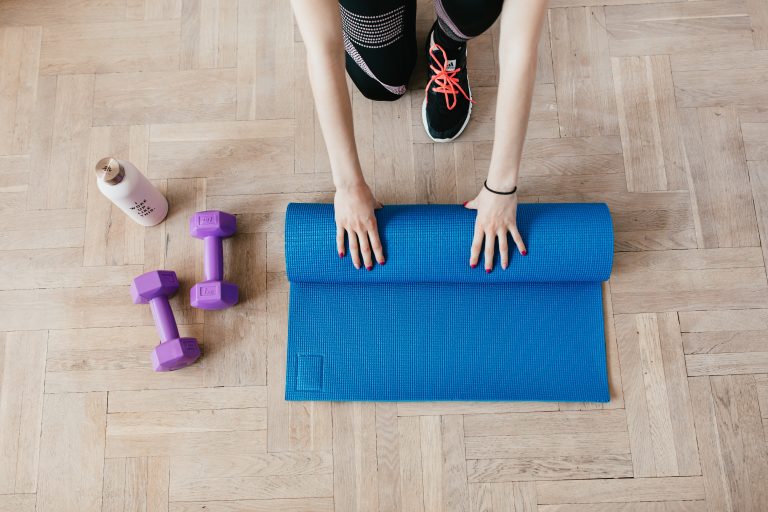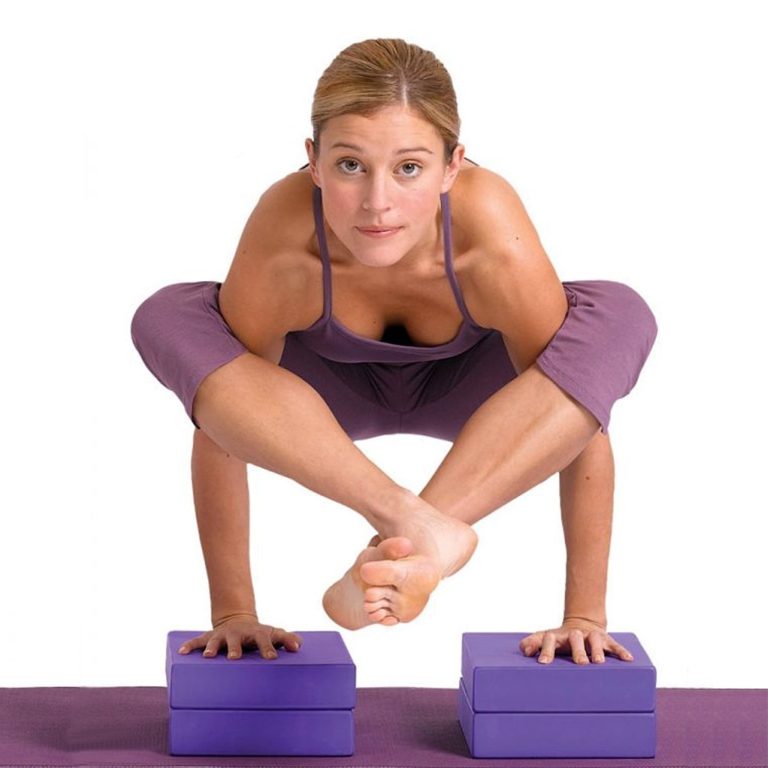Are you looking for a natural way to alleviate anxiety and depression? Look no further, because there is increasing evidence that suggests exercise might just be the answer you’ve been searching for. In this article, we will explore the potential benefits of incorporating exercise into your routine as a means to improve your mental well-being. So, let’s lace up those sneakers and discover the positive impact that exercise can have on anxiety and depression.
Table of Contents
TogglePhysical Benefits of Exercise
Increased release of endorphins
When you engage in regular exercise, your body releases endorphins, which are often referred to as “feel-good” hormones. These endorphins interact with the receptors in your brain and reduce the perception of pain while also triggering positive feelings. This increased release of endorphins can contribute to a greater sense of well-being and help alleviate symptoms of anxiety and depression.
Reduced muscle tension
Anxiety and depression can often manifest as physical symptoms, including muscle tension and tightness. However, when you exercise, your muscles are actively engaged and stretched, helping to reduce tension and alleviate any discomfort. As you move your body, these physical changes can promote relaxation and a sense of relief, contributing to an overall decrease in anxiety and depression symptoms.
Improved quality of sleep
Both anxiety and depression can disrupt your sleep patterns, making it difficult to get a restful night’s sleep. However, regular exercise can positively impact your sleep quality. When you engage in physical activity, your body’s natural sleep-wake cycle is regulated, which helps you fall asleep faster and enjoy deeper, more restorative sleep. By improving the quality of your sleep, exercise can contribute to reducing symptoms of anxiety and depression.
Mental Benefits of Exercise
Increased brain activity
Exercise has been shown to increase brain activity and improve cognitive function. When you exercise, blood flow to the brain is enhanced, delivering oxygen and nutrients that support brain health. This increased brain activity can lead to improved focus, concentration, and overall mental performance. By engaging in regular physical activity, you can stimulate your brain and help combat symptoms of anxiety and depression.
Improved mood and self-esteem
Exercise has a profound impact on your mood and self-esteem. When you engage in physical activity, your brain releases neurotransmitters like endorphins, dopamine, and serotonin, which are known to boost mood and enhance feelings of happiness and well-being. These positive changes in your brain chemistry can lead to improved self-esteem and a more positive outlook on life, making exercise an effective tool in managing anxiety and depression.
Enhanced cognitive function
Regular exercise has been shown to enhance cognitive function, including memory and attention span. By engaging in physical activity, you promote the growth and development of new brain cells and connections, which can improve cognitive function and prevent cognitive decline. This enhanced brain function can help alleviate symptoms of anxiety and depression by promoting mental clarity and overall cognitive well-being.
Exercise as an Anxiety Treatment
Reduction in anxiety symptoms
Exercise has long been recognized as a beneficial treatment for anxiety. When you engage in physical activity, it helps reduce symptoms of anxiety, such as excessive worry, restlessness, and tension. Exercise provides a healthy outlet for anxious energy and can help divert your attention away from anxious thoughts. By incorporating regular exercise into your routine, you can experience a significant reduction in anxiety symptoms.
Enhanced relaxation response
Physical activity has a profound impact on your body’s relaxation response. When you exercise, your heart rate increases, and your breathing becomes deeper and more regular. This activates your body’s natural relaxation response, similar to deep breathing or meditation. By engaging in exercise, you can trigger this relaxation response, which can help counteract the physical symptoms of anxiety and promote a state of calm and tranquility.
Improved emotional well-being
Exercise promotes the release of endorphins, which are known to enhance mood and boost overall emotional well-being. When you engage in regular physical activity, you can experience an improved sense of emotional well-being, reducing feelings of anxiety. Additionally, exercise can act as a distraction from negative emotions and provide a sense of accomplishment, further contributing to improved emotional well-being and reduced anxiety.
Exercise as a Depression Treatment
Elevated mood and energy levels
One of the hallmark symptoms of depression is a persistent feeling of sadness or a lack of motivation. However, exercise has been shown to elevate mood and boost energy levels. When you engage in physical activity, your body releases endorphins, dopamine, and serotonin, which all play a role in regulating mood and promoting feelings of happiness and well-being. By incorporating exercise into your routine, you can experience an increase in mood and energy levels, combating the symptoms of depression.
Enhanced social interaction
Depression often leads to social isolation and withdrawal from social activities. However, exercise can provide an opportunity for social interaction and connection. Whether it’s joining a group fitness class, participating in team sports, or simply going for a walk with a friend, exercise can facilitate social engagement and combat feelings of loneliness or isolation. By incorporating exercise into your routine, you can experience enhanced social interaction, which can positively impact your overall mental well-being.
Reduced symptoms of depression
Regular exercise has been shown to reduce symptoms of depression. When you engage in physical activity, your body releases endorphins, which act as natural antidepressants. These endorphins interact with the receptors in your brain and help alleviate symptoms of depression. Additionally, exercise stimulates the production of growth factors that promote the growth and development of new brain cells, potentially helping to reverse the damaging effects of depression on the brain. By incorporating exercise into your treatment regimen, you can experience a significant reduction in symptoms of depression.
Types of Exercises for Anxiety and Depression
Aerobic exercises
Aerobic exercises, such as jogging, swimming, cycling, or dancing, are particularly effective in alleviating symptoms of anxiety and depression. These activities increase your heart rate and promote the release of endorphins, providing a natural boost to your mood and energy levels. Aerobic exercises also improve cardiovascular health, which can have a positive impact on overall well-being.
Strength training
Strength training exercises, such as weightlifting or bodyweight exercises, offer numerous benefits for anxiety and depression. Strength training not only strengthens your muscles but also boosts your self-confidence and self-esteem. By challenging and pushing your physical limits, you can cultivate a sense of empowerment and accomplishment, inducing positive emotions and combating symptoms of anxiety and depression.
Yoga and mindfulness
Yoga and mindfulness practices combine physical movement with mental focus and relaxation. These activities have been shown to reduce anxiety and promote a sense of calm and well-being. By incorporating yoga or mindfulness into your routine, you can engage in gentle physical activity while also nurturing your mental and emotional health. These practices teach you to be present in the moment, helping to reduce anxious thoughts and improve overall mood.
Recommended Exercise Duration and Frequency
General exercise guidelines
To experience the physical and mental benefits of exercise, it is recommended to engage in at least 150 minutes of moderate-intensity aerobic activity or 75 minutes of vigorous-intensity aerobic activity per week. This can be spread out across several days. Additionally, incorporating strength training exercises two or more days a week is recommended to promote muscle and bone health.
Tailoring exercise to individual needs
It’s important to note that everyone’s exercise needs and abilities are different. Some individuals may benefit from more frequent or intense exercise, while others may need to start with shorter durations or less intensity. It’s important to listen to your body, consult with a healthcare professional if necessary, and tailor your exercise routine to meet your individual needs and limitations.
Importance of consistency
Consistency is key when it comes to reaping the benefits of exercise. Rather than sporadic bursts of activity, aim for regular exercise sessions throughout the week. By making exercise a consistent habit, you can establish a routine that supports your mental and physical well-being. Remember, even small amounts of exercise can make a difference, so focus on finding an activity that you enjoy and can commit to.
How Exercise Complements Other Forms of Treatment
Exercise as an adjunct to therapy
Exercise can complement other forms of therapy for anxiety and depression. If you are already receiving therapy or counseling, incorporating regular exercise into your treatment plan can provide additional benefits. Physical activity can act as a supplemental tool, reinforcing the skills and strategies you are learning in therapy sessions. By engaging in exercise alongside therapy, you can enhance your overall well-being and accelerate the progress towards managing anxiety and depression.
Combining exercise with medication
If you are taking medication to manage anxiety or depression, exercise can be a valuable addition to your treatment regimen. Exercise and medication work synergistically to combat symptoms and promote overall well-being. Medication can help regulate brain chemistry, while exercise helps release endorphins and support overall mental and physical health. Speak with your healthcare provider to determine the best approach for combining exercise with your medication.
Incorporating exercise into a holistic approach
Taking a holistic approach to managing anxiety and depression involves addressing all aspects of your well-being, including physical, mental, emotional, and spiritual. Exercise plays a crucial role in this holistic approach as it supports physical health, improves mood, and reduces symptoms. By incorporating exercise into a holistic treatment plan that also includes therapy, self-care activities, and lifestyle adjustments, you can create a comprehensive and effective strategy for managing anxiety and depression.
Overcoming Barriers to Exercise
Lack of motivation
Lack of motivation is a common barrier to exercise, particularly when dealing with anxiety and depression. However, finding ways to stay motivated can greatly enhance your ability to stick to an exercise routine. Set realistic and achievable goals, enlist the support of a workout buddy or join a group class, and focus on activities that you enjoy. Remember that even small amounts of exercise can make a difference, and the positive benefits will keep you motivated to continue.
Physical limitations
Physical limitations may present challenges when it comes to exercise. However, it’s important to remember that there are various types of exercise that can be modified to accommodate your specific needs. Consult with a healthcare professional or a qualified fitness instructor to find exercises that are safe and suitable for your physical limitations. Work within your abilities and gradually increase intensity and duration as you build strength and endurance.
Time constraints
Time constraints can often make exercise feel like an impossibility. However, prioritizing exercise and making it a part of your routine is crucial for managing anxiety and depression. Look for opportunities to incorporate physical activity into your daily life, such as taking the stairs instead of the elevator or going for a walk during your lunch break. Break up your exercise sessions into shorter bursts if needed. Remember, any amount of exercise is better than none, and consistency is key.
Tips for Getting Started with Exercise
Setting realistic goals
Setting realistic goals is essential for success when starting an exercise routine. Begin by identifying your current fitness level and setting achievable targets. Start with shorter durations or lower intensity and gradually increase as you feel more comfortable and confident. Celebrate small victories along the way, and be flexible with your goals, adjusting them as needed to ensure continued progress.
Gradually increasing intensity
When starting an exercise program, it’s important to gradually increase the intensity to avoid injury or burnout. Begin with low-impact activities and gradually incorporate higher-intensity exercises as your fitness level improves. Listen to your body and give yourself time to adapt to the demands of physical activity. Consistency and gradual progression are key to developing a sustainable exercise routine.
Finding enjoyable activities
Engaging in exercises that you enjoy is vital for long-term adherence. Experiment with different activities to find what you genuinely enjoy. Whether it’s dancing, swimming, hiking, or participating in team sports, choose activities that bring you joy and make you look forward to moving your body. By finding enjoyable activities, exercise will feel less like a chore and more like a rewarding and pleasurable experience.
Conclusion
Exercise offers a multitude of physical and mental benefits that can greatly contribute to the management of anxiety and depression. From increased release of endorphins and reduced muscle tension to improved mood and self-esteem, exercise positively impacts both the body and mind. It serves as an effective anxiety treatment by reducing symptoms, enhancing relaxation, and improving emotional well-being. Additionally, exercise acts as a depression treatment by elevating mood and energy levels, promoting social interaction, and reducing symptoms. By incorporating different types of exercises, tailoring routines, and overcoming barriers, you can harness the power of exercise to complement other forms of treatment. Remember to start with realistic goals, gradually increase intensity, and focus on enjoyable activities. With consistency and perseverance, exercise can become a valuable tool in your journey towards improved mental and physical health. So lace up your sneakers, grab a friend, and start reaping the rewards of exercise today!







